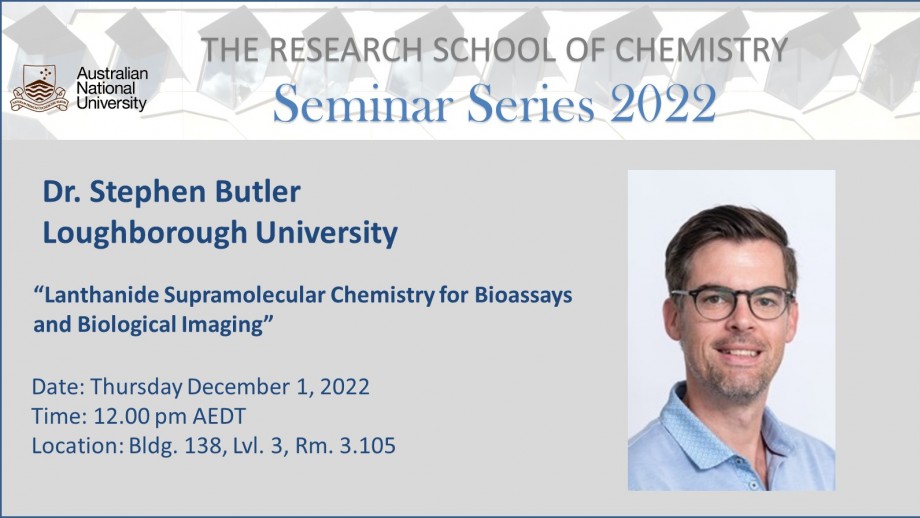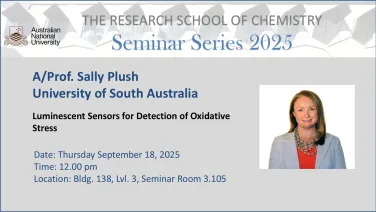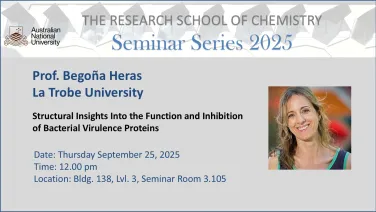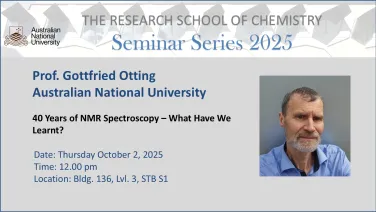RSC School Seminar - Dr Stephen Butler (Loughborough University)
Title: Lanthanide Supramolecular Chemistry for Bioassays and Biological Imaging
Event series
Content navigation
Description

Title: Lanthanide Supramolecular Chemistry for Bioassays and Biological Imaging
Abstract
Nucleoside phosphate anions (e.g. ATP, ADP, AMP) play crucial roles in a range of biological processes including energy transduction, cellular signalling and membrane transport. They are involved in pharmaceutically important enzyme reactions including kinases and phosphodiesterases.1 Current assays used for screening of potential inhibitors of these enzyme classes rely on unstable antibodies or chemically labelled substrates, which prevents real-time analysis and makes the accurate determination of enzyme kinetics more difficult.
We are developing luminescent europium(III) complexes2-6 capable of reversibly binding and discriminating between nucleoside tri-, di- and monophosphate anions in aqueous biological media (Figure 1). We have developed a Eu(III) receptor that selectively binds to ADP, providing a long-lived luminescence signal that enables real-time monitoring of kinase activity.3 This offers a potentially powerful tool for high-throughput screening of kinase inhibitors, obviating the need for expensive antibodies or labelled substrates. We have identified key design features for tuning host binding affinity and selectivity towards ATP or AMP, enabling different enzyme classes to be monitored in vitro.5, 6 Lead molecules have been developed into cellular imaging probes for visualising fluctuations in ATP levels in living cells.

References
1. S. Müller, A. Chaikuad, N. S. Gray and S. Knapp, Nat. Chem. Biol., 2015, 11, 818.
2. R. Mailhot, T. Traviss-Pollard, R. Pal and S. J. Butler. Chem. Eur. J., 2018, 24, 10745.
3. S. H. Hewitt, R. Ali, R. Mailhot, C. R. Antonen, C. A. Dodson and S. J. Butler. Chem. Sci., 2019, 10, 5373.
4. S. H. Hewitt, G. Macey, R. Mailhot, M. Elsegood, F. Duarte, A. M. Kenwright and S. J. Butler. Chem. Sci., 2020, 11, 3619.
5. S. Wheeler, C. Breen, Y. Li, S. H. Hewitt, E. Robertson, D. G. Fernig and S. J. Butler. Org. Biomol. Chem., 2022, 20, 596.
6. S. E. Bodman, C. Breen, S. Kirkland, S. Wheeler, E. Robertson, F. Plasser and S. J. Butler. Chem. Sci., 2022, 13, 3386.
Biography
Stephen completed his undergraduate degree at Warwick University, UK, before studying for a PhD with Prof. Kate Jolliffe at Sydney University, synthesising cyclic peptides as supramolecular receptors for anions. Following postdoctoral work in the UK with Prof. David Parker FRS, Stephen was awarded a Ramsay Memorial Fellowship at Durham University to develop molecular receptors for ATP. He began a Lectureship at Loughborough University in 2016, where his current position is Senior Lecturer. He leads a group synthesising lanthanide-based molecular probes for the purpose of sensing biological anions, probing enzyme activity, and monitoring fluctuations in target species in living cells. Stephen was awarded the Thieme Chemistry Journals Award in 2021 for his work in chemical synthesis and organic chemistry
Location
Building 138, Level 3, Room 3.105



